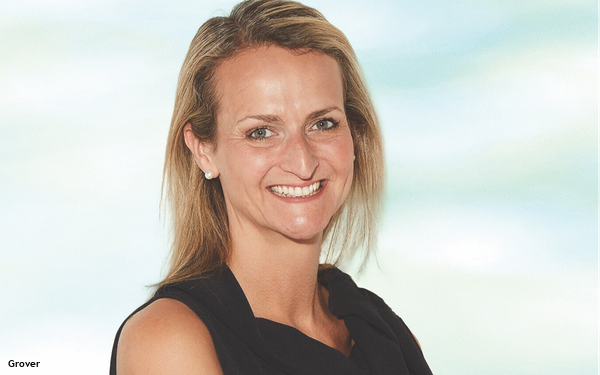Commentary
What Exactly Is A Wellness Brand?
- by Les Luchter , Staff Writer, October 12, 2023

It’s been a good couple of weeks for redefining health terms. First, Therabody redefined "workouts" to include everyday activities. Then, the Oura ring set out to redefine "stress" as a positive rather than a negative. And that brings me to “wellness.”
I’ve long divided the healthcare industry into pharma companies and consumer health, with wellness regulated to those under-regulated areas like supplements and non-traditional therapies.
So I eagerly anticipated a panel titled “The Wellness Consolidators” at this week’s HLTH conference, only to learn that half of the four participants represented two of consumer health’s largest players: Kenvue (formerly Johnson & Johnson Consumer Health) and Unilever.
It was left to another panelist -- Michelle Carnahan, president of…let’s call it a virtual wellness consolidator, Thirty Madison… to address the issue bugging me.
“Wellness is the new definition of healthcare,” she declared.
To go deeper into that definition, I checked in with Margot Grover, chief strategy officer for Publicis’s Saatchi & Saatchi Wellness.
The following Q&A has been edited for space and clarity.
Pharma and Health Insider: How do you define a wellness brand?
Margot Grover: Healthcare has traditionally been a reminderof our own mortality, about the fighting of sickness. Wellness is something much more aspirational: a process through which people make choices in their lives on many levels, physical being the most obvious, taking care of our bodies, getting medical attention when we need it, but also in terms of our emotional well-being, sense of self-esteem, the sense of control we have in our lives.
Pharma and Health Insider: Don’t people sometimes see wellness only as supplements, alternative therapies and the like, so you’d need to redefine the word itself?
Grover: Yes.Sometimes people just think of wellness as like, yoga and supplements, and they actually don’t give it the seriousness it actually deserves.
Wellness is fundamental to how we live as human beings. The early stages of how wellness was defined in society were supplements, new age thinking, and in contradiction to traditional medicine. Wellness is not in contradiction to many areas of our lives. It is a part of traditional medicine. It is a part of how we work.
Wellness is beginning, for the first time, to take on a much deeper meaning in culture and society.
Pharma and Health Insider: What are some recent wellness trends?
Grover: Post-pandemic, we have really shifted. We had the physical scare of COVID and our mortality, but what COVID really did was raise our understanding of the importance of mental, emotional and social health in a way that was transformative and will affect us for many generations to come. That created a societal shift
Pharma and Health Insider: Is it possible for a brand not known for wellness to become a wellness brand?
Grover: Absolutely. A lot of brands are wellness brands and don't realize they are. Wellness brands are ultimately about helping people find the choices that confirm meaning in their lives.
Years ago [at Ogilvy], I was working on an orthopedic joint brand called Smith+Nephew, literally hip replacements and knee replacements. Nobody asked about the brand of joint that was going into their hip or their knee. I was like, wow, this is kind of crazy. We are obsessed with sneaker brands that go on our feet. But we don’t even think about the joint in our hip or knee that is much more fundamental to our performance and ability to achieve things in our lives than a sneaker. I thought, wow, if there was a brand that had the potential to be wellness, it was that.
We decided to build the brand on an athletic basis, like a performance brand. We built it in terms of athletic achievement and the pursuit of wellness. It shifted the tide in that space.
Pharma and Health Insider: So what brand categories make up wellness?
Grover: Part of the beauty of wellness is that it exists across so many brands, across so many different types of clients. It’s an endless aspirational pursuit. It affects all kinds of categories that don’t even think they’re part of it.
There are the obvious -- the supplements, all those things -- but it’s also a part of beauty now. It is part of oncology and part of traditional pharmaceutical brands.
What has changed is the audiences. Brands always want to help people achieve aspirations, and there are just so many more brands out there now that are wellness brands, trying to help people do that.
At its core, wellness is a fundamental aspiration we seek in multiple areas of our lives. That’s why it’s so fascinating. There are categories we haven’t even tapped yet.


